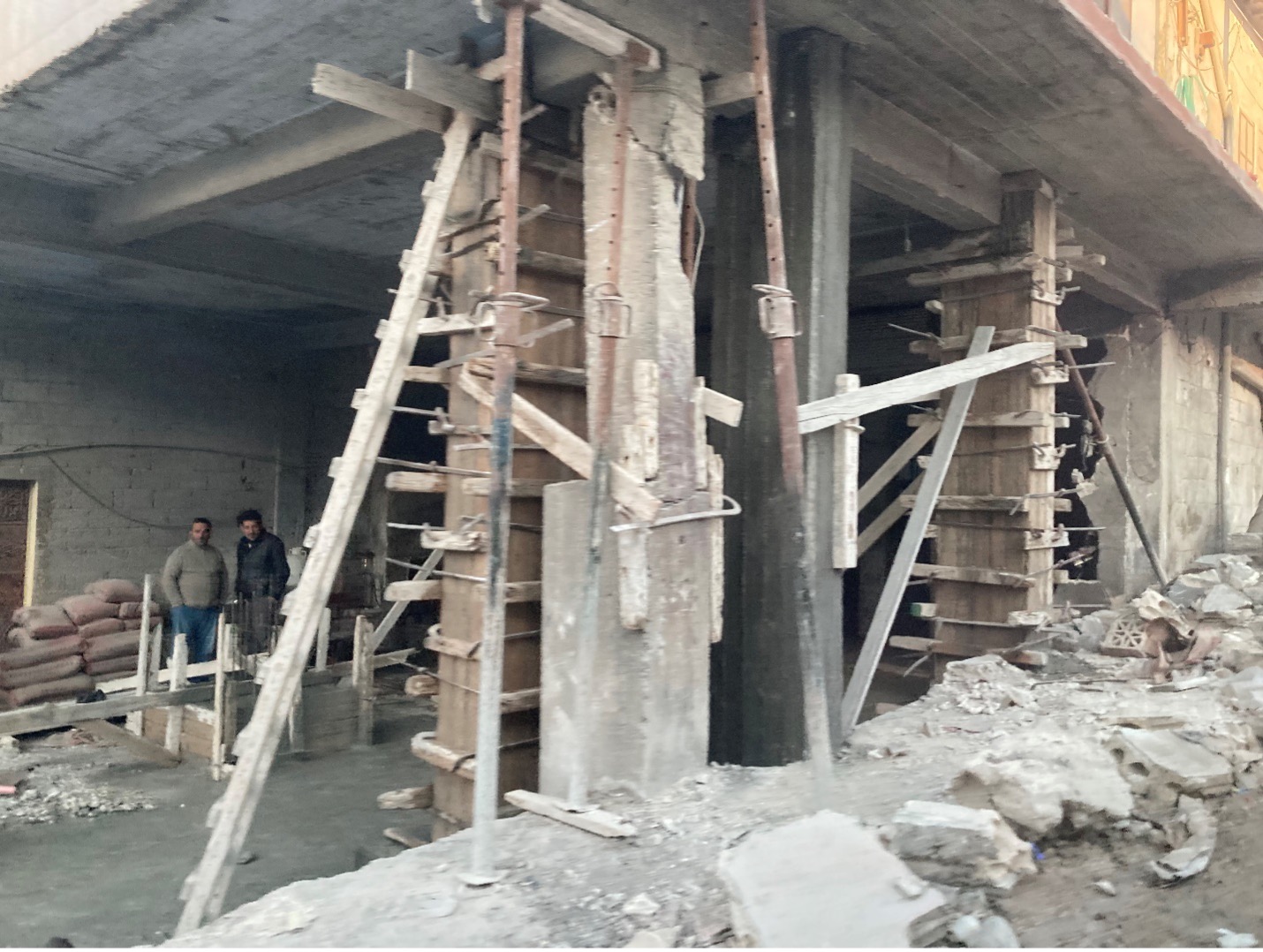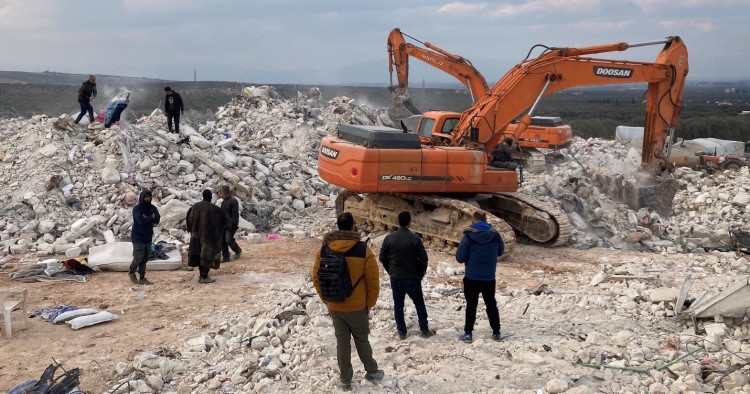“Idlib is under siege” — this is the common sentiment shared with me by both local leaders and residents alike. The dual earthquakes on Feb. 6 not only rocked the physical foundations of the cities in Syria’s last opposition-held region, it cracked the social foundation of trust Syrians had with the international aid community. “The U.N. was built 75 years ago to respond to crises around the world,” the rebel leader of Idlib and head of Hayat Tahrir al-Sham (HTS), Abu Muhammad al-Jolani, tells me. “They have experience with this, so why were they not able to send anyone to save our people from the rubble?” As the critical first week passed and no help arrived, urgency turned to anger and desperation. “The U.N. failed us in the first phase — rescuing those still alive under their houses. We hope they will not fail us in the next phase of rebuilding,” says Jolani.
Twelve years of war and limited international assistance have left Idlib’s institutions weak and unable to cope with the sudden crisis. “We already didn’t have enough doctors and specialists or specialized equipment,” says Dr. Husain Bazar, the minister of health of Idlib’s Salvation Government. “Most of the material support we were receiving ended a year ago, probably because of the war in Ukraine. Now it is needed more than ever,” he tells me. Meanwhile, more than 10,000 families have suddenly found themselves living in tent camps, extremely vulnerable to diseases like cholera and measles, unsure if they’ll have a home again. There have been many grassroots development projects in recent years by Syrian businessmen and regional NGOs, creating new housing blocks for both poor and middle-class displaced families. Yet all of these efforts have been set back years by the tens of thousands of newly displaced families and thousands of destroyed or damaged buildings. Rebuilding now demands international help.
The U.N. and the broader international community point to HTS and Jolani as the main reason for their lack of involvement in Idlib over the years. Jolani carries with him heavy historical baggage as a former member of the Islamic State in Iraq — ISIS’s predecessor — and the founder of Jabhat al-Nusra, al-Qaeda’s official Syria affiliate before reforming as HTS. Despite breaking from al-Qaeda in late 2016 and fighting and dismantling an al-Qaeda and ISIS insurgency in Idlib in the years since, Jolani and HTS are still legally considered by the West as part of the global al-Qaeda network. This designation and its legal consequences have stymied much of the more robust, long-term infrastructure aid needed to rebuild Idlib. February’s earthquakes have underscored the inherent weakness of this static, inflexible policy: When disaster struck, there were only weak international mechanisms in place to facilitate a quick response.
The Syrian regime and its allies in the United Nations were quick to take advantage of the crisis, calling for all aid to northwest Syria to be directed through Damascus via the infamous “cross-line” mechanism in which a few U.N. trucks transit between regime and rebel-held territory every few months. It is well proven by now that the regime steals a substantial portion of all U.N. aid that enters Damascus, and often limits the type and quantity of aid allowed cross-line. After the earthquake, HTS and the residents of northwest Syria begged for the type of immediate, robust assistance that could only be provided via their Turkish border crossing — a crossing through which the vast majority of U.N. aid has flowed for years. But the U.N. stalled and quickly diverted attention from its own failures to HTS’s blocking of cross-line aid. HTS claims it has not refused to allow cross-line aid, but has only insisted that it should occur when substantial U.N. earthquake assistance begins to enter from Turkey — in line with U.N. Resolution 2672. The U.N. claims this rhetoric demonstrates the group’s politicization of aid, obfuscating the fact that cross-line has always, explicitly, been political.
Since 2021, the U.N. has agreed to send a purely symbolic amount of aid to northwest Syria via Damascus, and in return Russia agrees to allow thousands of trucks in through Turkey every six months. These deals are the culmination of seven years of politicization and weaponization of humanitarian aid, during which Russia routinely used its Security Council veto to whittle down the number of crossings the U.N. could use to bring aid to anti-Assad Syrians. However, international law experts and human rights organizations have for months highlighted the U.N.’s legal duty to “conduct temporary humanitarian relief operations to bring life-saving supplies to a people in extreme need, when no alternatives exist.” The U.N. chose instead to empower Damascus.
In lieu of international support, the people of Idlib took it upon themselves to first rescue, then recover, re-house, and finally begin rebuilding the tens of thousands of lives uprooted by this disaster. Idlib’s Salvation Government and its Ministry of Development and Humanitarian Affairs (MDHA) have taken on the role of coordinating aid distribution among the around 100 local NGOs that operate in the province, facilitating rescue and aid work between NGOs, the White Helmets, and other ministries, ensuring all communities, no matter how small or remote, are serviced. Local contractors, HTS, and even Turkish military units deployed along the frontline have donated heavy machinery for recovery efforts.
But rebuilding all that has been destroyed is another matter. The scale of the destruction and its random nature have left residents comparing the quake to a months-long regime offensive occurring in a single night. Aftershocks and the third, smaller earthquake on Feb. 20 have left residents wracked with fear and paranoia that another major quake is imminent. It is a brutal nightmare three years into a ceasefire that had begun to breathe new life into the region. Idlib is not helpless, its residents have demonstrated their resiliency for over a decade of war and siege, but they cannot rebuild from the layers of crises that have built up over 12 years on their own.










Gregory Waters is a Non-Resident Scholar at the Middle East Institute, a consultant for the International Crisis Group, and a research analyst at the Counter Extremism Project. You can follow him on Twitter @GregoryPWaters.
Main photo: A family sifts through the rubble of their apartment building outside Harem looking for blankets and clothes to salvage. Photo courtesy of the author.
The Middle East Institute (MEI) is an independent, non-partisan, non-for-profit, educational organization. It does not engage in advocacy and its scholars’ opinions are their own. MEI welcomes financial donations, but retains sole editorial control over its work and its publications reflect only the authors’ views. For a listing of MEI donors, please click here.













